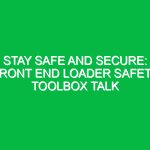Introduction
Steel erection is a critical component of the construction industry, involving the assembly and installation of steel structures such as buildings, bridges, and towers. The process requires precision, skill, and a keen awareness of safety protocols. Within the Health, Safety, and Environment (HSE) domain, the significance of steel erection cannot be overstated. It is not merely about constructing structures; it is about ensuring the safety of workers, the public, and the environment. This article delves into the best practices, potential hazards, and regulatory requirements associated with steel erection, aiming to provide a comprehensive overview that emphasizes the importance of HSE considerations.
Understanding Steel Erection
Steel erection encompasses several tasks, including the placement, alignment, and securing of steel beams, columns, and trusses. This multifaceted process requires specialized skills, equipment, and a thorough understanding of engineering principles. Properly executed steel erection forms the backbone of many infrastructure projects, providing stability and durability. However, the complexity of these operations presents numerous safety challenges that must be addressed to minimize risks.
Key Aspects of Steel Erection Related to HSE
Risk Assessment
Before any steel erection project begins, conducting a comprehensive risk assessment is essential. This involves identifying potential hazards that could pose a threat to workers and the surrounding environment. Common risks in steel erection include:
- Falls from Heights: Workers are often required to work at significant elevations, making falls a major concern.
- Structural Failures: Improperly secured steel elements can lead to catastrophic collapses.
- Equipment Accidents: Cranes and hoisting devices are integral to steel erection but can be dangerous if not operated correctly.
- Environmental Hazards: Weather conditions, such as high winds or rain, can exacerbate risks.
Safety Training and Competence
One of the most effective ways to enhance safety during steel erection is through rigorous training programs. Workers should receive specialized training that covers:
- Proper use of personal protective equipment (PPE)
- Safe operating procedures for cranes and lifting equipment
- Recognition of hazards and emergency response protocols
Incorporating real-life scenarios into training sessions can significantly increase retention and understanding. For instance, a construction company in Texas experienced a significant reduction in accidents after implementing scenario-based training, where workers practiced responding to simulated hazards.
Use of Personal Protective Equipment (PPE)
The use of appropriate PPE is fundamental in protecting workers during steel erection. Essential PPE includes:
- Hard hats to protect against falling objects
- Safety harnesses for fall protection
- Steel-toed boots to prevent foot injuries
- High-visibility vests to enhance worker visibility
Employers must ensure that all workers are equipped with the necessary PPE and that they understand its proper use. Regular inspections and maintenance of PPE should also be conducted to ensure effectiveness.
Best Practices for Steel Erection Safety
Planning and Coordination
Effective planning is crucial for the safe execution of steel erection projects. This includes coordinating with various stakeholders such as engineers, safety officers, and construction managers. A well-structured plan should incorporate:
- Detailed erection sequences
- Clear communication protocols
- Contingency plans for adverse weather conditions
For example, a major construction firm in New York implemented a digital project management tool that allowed real-time updates and communication among team members. This not only streamlined operations but also significantly minimized safety incidents due to improved coordination.
Regular Inspections and Maintenance
Regular inspections of equipment, materials, and the work environment are vital for preventing accidents. Steel structures should be inspected for:
- Defects or damage in the steel components
- Proper alignment and connection of steel elements
- Functionality and safety of lifting equipment
Routine maintenance of cranes and lifting devices is equally important. For instance, a construction site in California experienced a near-miss incident due to a malfunctioning crane. After a thorough inspection, it was discovered that regular maintenance had been neglected, underscoring the importance of adherence to inspection schedules.
Implementing Fall Protection Measures
Falls are the leading cause of fatalities in the construction industry, making fall protection measures imperative. Effective strategies include:
- Installing guardrails and safety nets
- Utilizing personal fall arrest systems
- Conducting regular safety drills to prepare workers for fall scenarios
One company in Florida saw a dramatic decline in fall-related accidents after implementing a comprehensive fall protection program that included training, equipment, and safety audits.
Potential Hazards and Safety Considerations
Environmental Risks
In addition to worker safety, consideration must be given to environmental impacts during steel erection. Potential environmental hazards include:
- Soil erosion from construction activities
- Pollution from machinery emissions
- Noise pollution affecting local communities
To mitigate these risks, companies should implement environmental management systems (EMS) that comply with local regulations. For example, a steel erection project in the Midwest adopted an EMS that reduced noise pollution by scheduling work during less disruptive hours and employing quieter machinery.
Emergency Preparedness
Preparing for emergencies is a critical component of HSE management in steel erection. This includes developing and practicing emergency response plans for scenarios such as:
- Falls or injuries on site
- Equipment malfunctions
- Severe weather events
Regular drills and training can help workers respond effectively in emergencies. For instance, a construction team in Ohio conducted quarterly emergency drills that improved their response times during actual incidents, demonstrating the value of preparedness.
Regulations and Standards Governing Steel Erection
Compliance with regulations is a cornerstone of HSE practices in steel erection. Key regulations include:
- OSHA Standards: The Occupational Safety and Health Administration (OSHA) provides specific guidelines for steel erection, emphasizing the importance of training, fall protection, and equipment safety.
- ANSI Standards: The American National Standards Institute (ANSI) outlines safety standards for various aspects of the construction process, including steel erection practices.
- Local Building Codes: Adhering to local building codes ensures that structures are erected safely and meet community standards.
Understanding and following these regulations not only enhances the safety of steel erection projects but also protects companies from legal liabilities and enhances their reputations.
Conclusion
Steel erection is a vital yet complex process that demands meticulous attention to health, safety, and environmental considerations. By embracing best practices such as thorough risk assessments, rigorous training, and adherence to regulatory standards, companies can significantly mitigate risks and enhance safety on construction sites. The importance of steel erection in promoting health, safety, and environmental sustainability cannot be overstated, as it lays the foundation for safe and durable structures that serve communities for generations. As the industry continues to evolve, ongoing education and commitment to HSE best practices will be essential in safeguarding workers and the environment alike. It is not just about building structures; it is about building a safer future.


